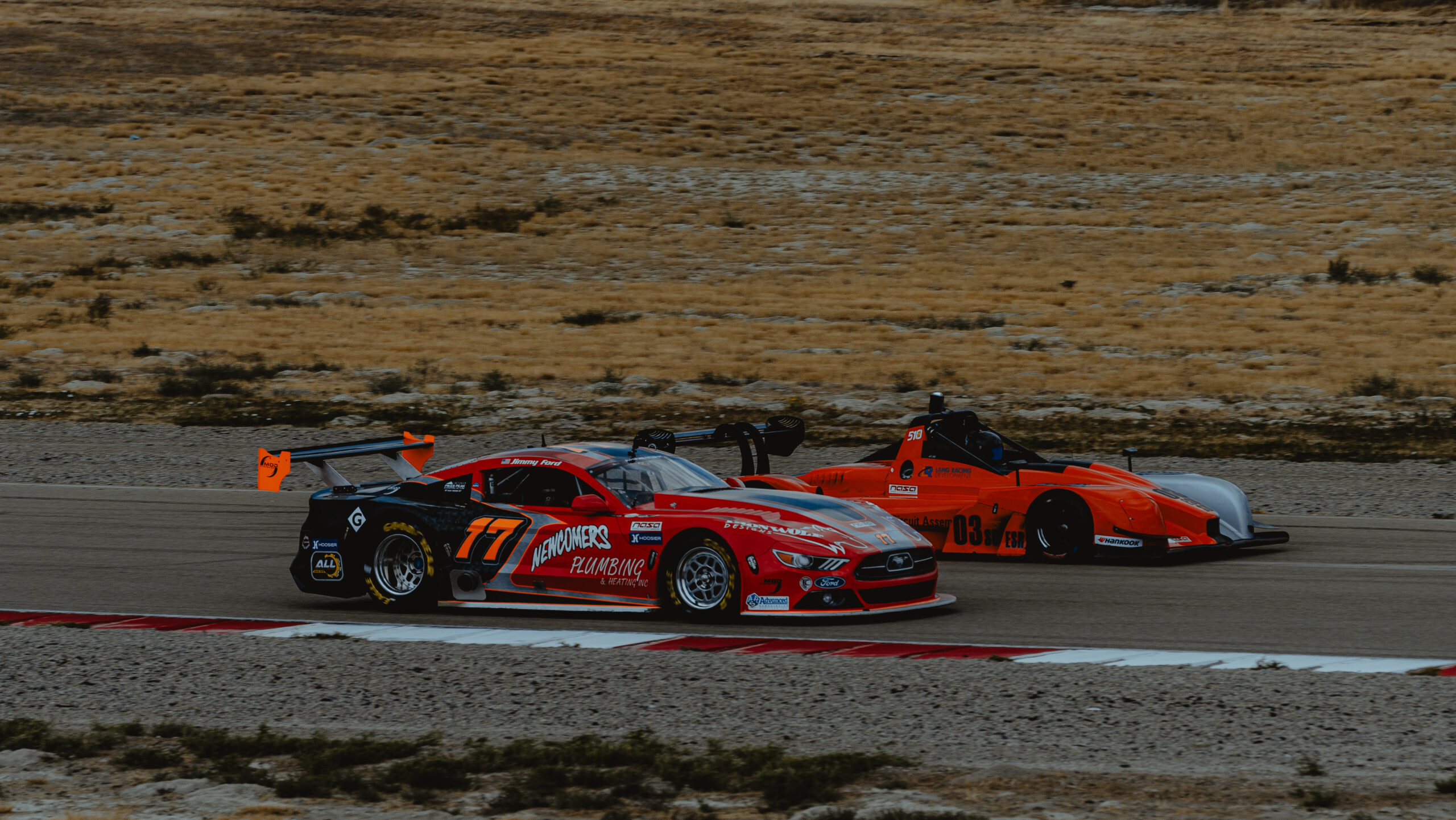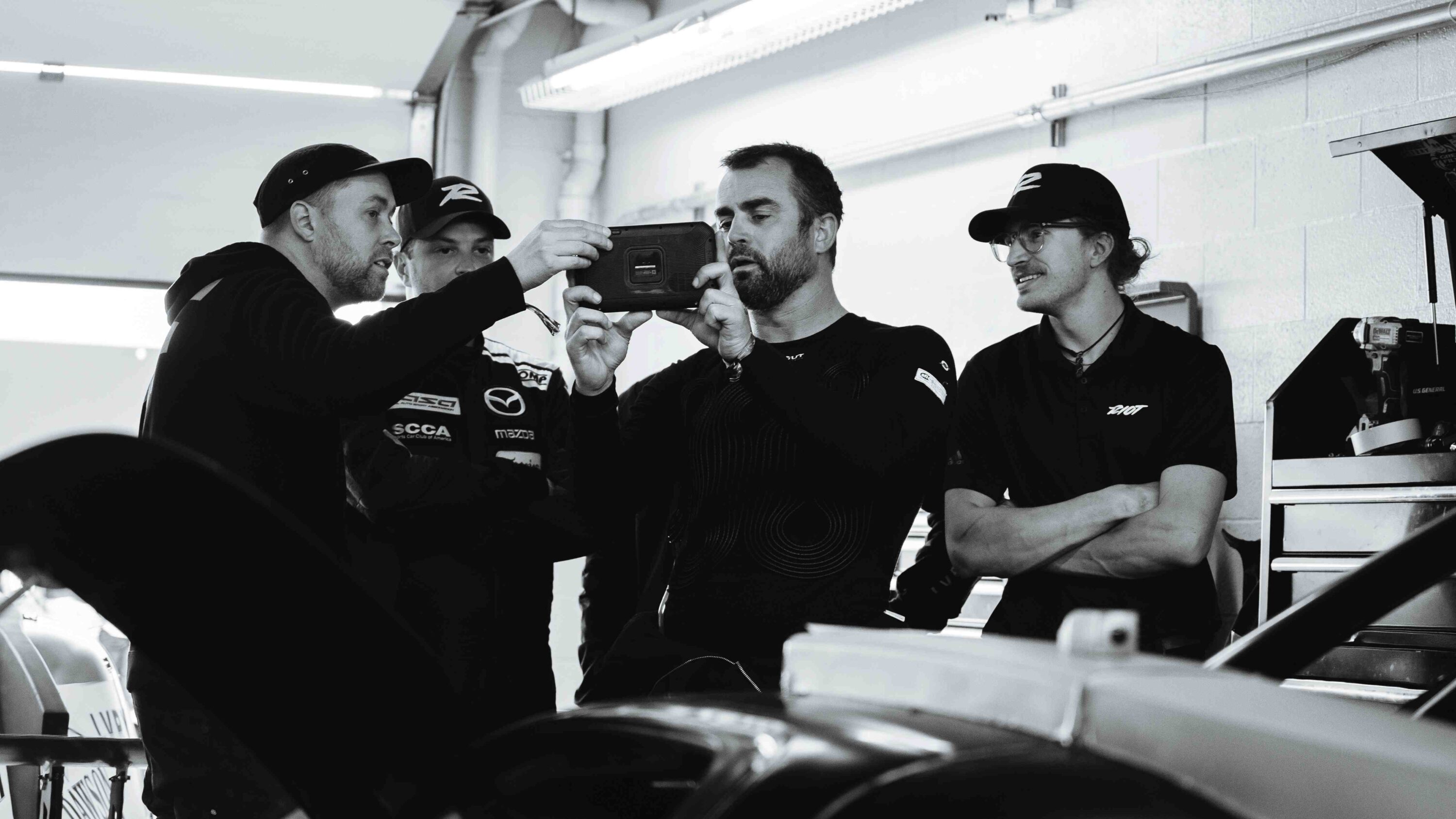Photo Credit: Taco Gunner | Stefan Jones
Observations from behind the wheel
Over the past year or so, I’ve raced in a few different “low budget” endurance race events. As far I’m concerned, racing in Lucky Dog, Champcar, AER, and WRL are really good series to practice one’s racecraft skills. With a mix of cars and driver skill levels, passing, being passed, and thinking strategically is critical.
On the flight home from one of these events, with what I’d observed and experienced fresh in my mind, I wrote the following:
What is racecraft? It’s the craft, skill, and technique of making passes in a clean, safe manner; it is also being passed in a clean, safe manner. In both cases, the goal is to lose as little lap time as possible, and to be respectful of your fellow drivers.
What is a clean, safe pass? One where there is no contact between cars, and any car is not put in a position where it could result in going off the track.
One of the most important aspects of racecraft, and especially in endurance racing, is knowing when to be patient, and when to be impatient. In fact, knowing when to be patient may be the most important. And…to know when to race, and when not to.
When a faster car is passing you, don’t race them. If they’ve caught up to you, there’s a reason: they’re faster than you. That may be because they’re in a faster class, they’re in a faster car, or at this point in the race, they’re just driving faster than you. Unless it’s the last lap or two, fighting them for position is probably going to cost you more than if you let them ease by you.
For example, if they’re making a pass in the brake zone, staying beside them hurts you more than helps you. They’re going to pass, so the sooner they do, the sooner you can get back to driving as fast as you can. To run alongside them in the brake zone, and especially in the corner, puts you in a worse position to get a good exit off that corner. It also hurts the passing car, and that’s okay if you’re racing it for position, but if it’s in a different class, or you are on different laps for some reason, fighting for position hurts both of you.
You need to know when to let other cars go. If they’re passing in the brake zone, let them get by you before the turn-in, then you can tuck in behind them on the ideal line and get a good exit (instead of trying to stay on their outside through the turn, hurting your exit). If you really want to defend your position, let them get into the corner slightly in front of you, and be ready to do the “over-under” and come out of the corner faster than they do on their inside exiting the corner.
In my experience from four races, this is the number one thing that drivers should focus on. Far too many times I would be passing a slower car, and the driver would try to run around the outside of me through a corner. The result? The slower car lost far more time than they should have (it had little to no effect on me).
Cars don’t just appear! If there is a car behind you and about to attempt a pass on you, you should have noticed them before that instant. And there’s a reason they’re about to pass you: they’re faster than you (again). Let them go, and learn from them.
Should you give up every pass? No, I’m not saying that. But you know when a car is faster than you are—at least, you should. If a car is barely faster than you, and it’s taking many laps for them to catch you, it’s okay to not just give up and wave them past you. But if they weren’t right on your rear bumper in the last brake zone, and now they are, they’re faster. Let them go.
The best race drivers know when to fight for position, and when not to. When you’re being passed, your goal is to lose as little time as possible. Running side-by-side through a corner, thinking that you’re proving a point about how fast you are in the corners, is hurting your lap times more than if you let them by. And no one cares if you’re faster through a corner than a faster car. Seriously, no one cares. What anyone cares about is how consistently fast your lap times are. That’s what wins races.
Speaking of consistency, that should be your priority. A single fast lap time is meaningless in a race, especially long endurance races. If you turn a lap that matches the track record, and then lose a couple of seconds or more every time you are passing or being passed, you’re not going to win. But if your fastest lap is a second off the track record, and your worst time in traffic is only a second off that, that will win races. That is impressive.
All the basic advice about racecraft applies doubly-so in endurance racing:
- Be predictable. If a driver is coming up behind to pass you, they don’t expect you to move off-line. That’s unpredictable. Staying on line is predictable.
- Be smart. Of course, if a passing car is on your inside at or near the turn-in point for a corner, turning in to stay on your line would result in contact, so be smart and give room to the passing car at the point where its front is around your rear bumper.
- When passing a car, stay close to the car you’re passing. For example, in a brake zone it can feel safer to move closer to the inside of the track and far away from the car you’re passing, but it’s actually less safe. By moving away from the other car, you’ve put yourself in a position where it’s harder for the other driver to see you. And, if you’re half a car width from the other car and they turn into you, it’s a small contact; if you’re two car widths away when the other driver turns in, it’s going to be a much bigger contact. Obviously, there should never be any contact, but there are humans driving all the cars on track, and sometimes humans make mistakes.
- Car don’t just disappear. They also don’t just appear. “I didn’t see the other car” is never a good excuse. If there was a car behind you as you approached a brake zone, and then you can’t see it, it didn’t just magically disappear into space. Give room for it until you can see it.
- Be decisive. Indecision causes more incidents than you’d think. If you’re unsure, don’t do it. Wait until you’re sure you can make a clean, safe pass.
- Blocking is a no-no. If you have to resort to blocking to defend your position, you don’t deserve the position you’re in. It’s okay to discourage a pass if you’re racing for position with a car in the same class, but never with a car from another class. If it’s the last lap or two of a race, you can be a little more defensive, as long as you’re safe and predictable. And you should never, ever make more than one move to defend a pass. That means you can move to the inside in the brake zone to take that line, but you then cannot move back over to the outside to block that line. One move, that’s it. Keep in mind at all times that the best way to defend your position is to drive faster. When you focus on blocking, you’re slowing yourself down, and increasing the chances of being passed.
Now, my biggest pet peeve, so get ready for a bit of a rant!
The general guideline in racing for many years has been that the passing car is responsible for making a clean, safe pass. But, if both drivers—the passer and passee—take responsibility for the clean, safe pass, it doubles the number of responsible drivers. And doubles the chances of a clean, safe pass.
Go into every race with the mindset that you’re responsible to ensure that every pass—whether you’re making it, or it’s happening to you—is your responsibility to be clean and safe.
If you have any dreams or goals of moving up in racing, get that mindset embedded in your head because more and more pro race series have or are going to this rule. IMSA looks at every incident on track with this in mind, and it’s stated in driver’s meeting.
You are responsible to make sure that every pass is completed clean and safely, no matter what position and role you’re in.
Here’s a challenge for you in your next race: never have a passing car take you by surprise. You should be aware of all cars approaching you from behind. That means taking a quick glance in the mirror often enough to never have one surprise you, and judging when they’re going to catch you. If you look in the mirror exiting a corner and notice another car in that corner, when will they catch you? On the straight, in the next brake zone, after the next corner? Think strategically and proactively, rather than simply reacting to a car behind you in the instant they’re attempting to pass.
The same applies to when you’re approaching a slower car and wanting to pass. You should have been planning the pass well in advance—at least a corner before the one in which you’re actually going to attempt the pass.
Read the cars ahead of you. Where is the car ahead of you quick, and where is it not (relative to you)? Where can you take advantage of it? What is the driver of that car focused on, or challenged with? Are they setting up a pass on a car ahead them? Are they in a pack of cars, and possibly mentally stretched at that moment? How challenging is the upcoming section of track? Where is the best place for you to attempt to pass? Are they in a battle for position, or mostly running on their own?

Consider the risk/reward ratio. Is it early in the race, a time when it’s more important to just log safe, clean laps, or is it in the last 30 minutes or so when every pack of cars is likely to have battles for podium positions at stake?
What are your own personal goals for this race? If you’re early in your racing career, and learning is the most important thing, take fewer risks. You’re going to learn much more by staying on track, rather than battling for position and ending up off track and/or with a damaged car. If you’re more experienced, and you take that risky move, but it’s early in the race, what will a damaged car do to your reputation?
Your reputation is more important than you may think. You want a reputation as being a fair, respectful, responsible, and smart racer. Take time to think about each of those words—fair, respectful, responsible, smart—and picture how you’d have to race to have others describe you in that way. Again, none of these mean “rolling over and playing dead” every time another driver tries to pass you. But it’s knowing when to challenge the pass, and when not. Smart drivers know when they can gain more by not fighting a pass.
Believe me, racing this way is far more fun than ending up with a damaged race car because you didn’t race fair, respectfully, responsibly, and smart. And fun is why we race!
– Ross Bentley
/////
Ross Bentley has spent a lifetime helping drivers go faster. He’s the author of the Speed Secrets books (the best-selling racing series ever), is one of the most sought-after driver coaches in the world, and runs SpeedSecrets.com, the largest collection of driver development resources anywhere. Want more articles like this? Subscribe at RossBentley.Substack.com.







